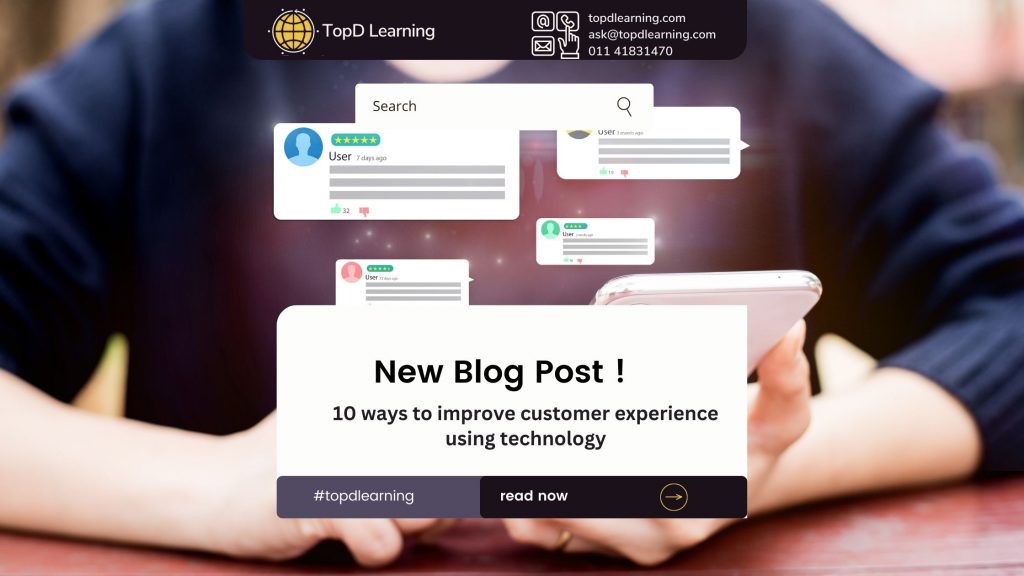Uncover the transformative role of technology in reshaping customer experience. This blog post delves into the unique strategies businesses can adopt using digital tools to build a customer-centric model.
In the digital age, businesses are not just using technology to streamline their operations. They’re harnessing it to redefine the very nature of customer interactions. Moving away from traditional methods, they’re adopting innovative strategies to engage with their customers, build stronger relationships, and fuel growth.
1. The Rise of Conversational AI
Imagine a world where customer service transcends beyond a transactional interaction and morphs into an engaging dialogue. This is the reality that conversational AI is shaping. These AI-powered chatbots are not just programmed to respond; they are designed to converse, providing an interaction that feels human-like. Take the example of the Bank of America’s AI chatbot, Erica, which assists customers with their banking needs, making the banking experience more interactive and personalized.
2. Intelligence Augmentation: The Perfect Synergy
AI is not here to take over; it’s here to enhance human capabilities. Think of it as having a digital sidekick that can draft a response to a customer query, which the representative can then refine. This not only accelerates the response time but also empowers the customer service representative to concentrate on more intricate tasks. A prime example of this approach is IBM’s Watson, which assists customer service representatives by providing suggestions for handling customer queries, thereby enabling them to tackle more complex issues.
3. Social Media: The New Frontier for Customer Interaction
Social media platforms have become the new frontier for customer interaction. Businesses can leverage AI to manage these interactions more efficiently. For instance, KLM Royal Dutch Airlines uses AI to handle customer queries on social media, providing quick and efficient responses to customer queries.
4. Innovation: The AI Catalyst
AI can act as a catalyst for businesses, propelling them to innovate their customer experience. Businesses can employ AI to dissect customer data and identify patterns that can lead to innovative solutions. For instance, Spotify uses AI to analyze listening habits and generate personalized playlists, offering a unique listening experience to each user.
5. User Interfaces: The Customer Experience Portal
The user interface is more than just a design; it’s the portal to the customer experience. A well-crafted user interface can significantly elevate the customer experience. AI can assist businesses in enhancing their user interfaces by swiftly making changes to their code. For example, Pinterest uses AI to improve its user interface, making it more intuitive and user-friendly, thereby enhancing the browsing experience for users.
6. Personalization: The Loyal Customer’s Expectation
In the era of information abundance, personalization is not just a preference; it’s an expectation. AI can scrutinize customer data to comprehend their preferences and behaviors, enabling businesses to customize their services to cater to individual customer needs. A prime example is Spotify, which uses AI to curate personalized playlists, enhancing the listening experience and fostering customer loyalty.
7. Predictive Analytics: The Crystal Ball of Customer Needs
AI can use predictive analytics to anticipate customer needs. By analyzing past behavior, AI can predict what a customer might need in the future, allowing businesses to proactively meet those needs. For instance, Waze, a GPS navigation software app, uses predictive analytics to suggest the fastest routes based on a user’s past routes and current traffic conditions.
8. Real-Time Support: The Always-Open Customer Service Window
With AI, businesses can provide real-time support to customers. AI-powered chatbots can offer 24/7 customer support, ensuring that customers can get the help they need at any time. For example, Slack, a business communication platform, uses its AI chatbot, Slackbot, to assist users withtheir queries, providing real-time support and enhancing user experience.
9. Seamless Omnichannel Experience: The Consistency Customers Crave
In today’s interconnected world, customers interact with businesses across multiple channels. AI can assist businesses in providing a seamless omnichannel experience, ensuring consistency across all channels. A prime example of this is Virgin Atlantic’s seamless omnichannel experience, which allows customers to manage their travel plans across various platforms, providing a consistent and convenient experience.
10. Automation: The Efficiency Booster
AI can automate various customer service processes, reducing the workload for customer service representatives and allowing them to focus on more complex tasks. This not only leads to more efficient customer service but also a superior customer experience. A prime example of this is the online retailer Amazon, which uses AI to automate its order fulfillment process, making it quicker and more efficient for customers.
Conclusion: The Future of Customer Experience is Now
In conclusion, technology, particularly AI, presents a wealth of opportunities for businesses to enhance their customer experience. From providing engaging, human-like interactions through conversational AI to innovating customer experiences and improving user interfaces, the potential is boundless. By harnessing these technologies, businesses can not only elevate their customer experience but also foster stronger relationships with their customers, and ultimately, drive business growth.


